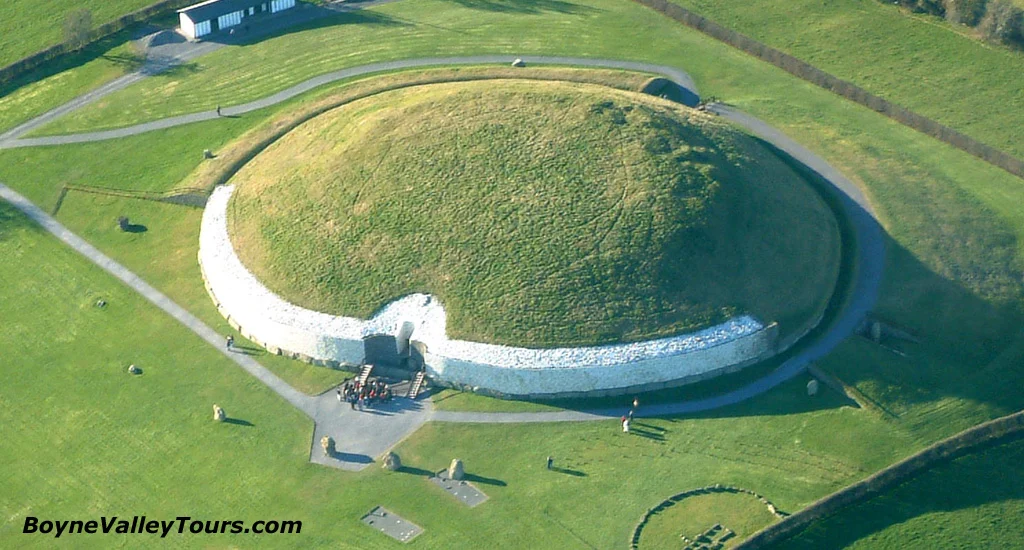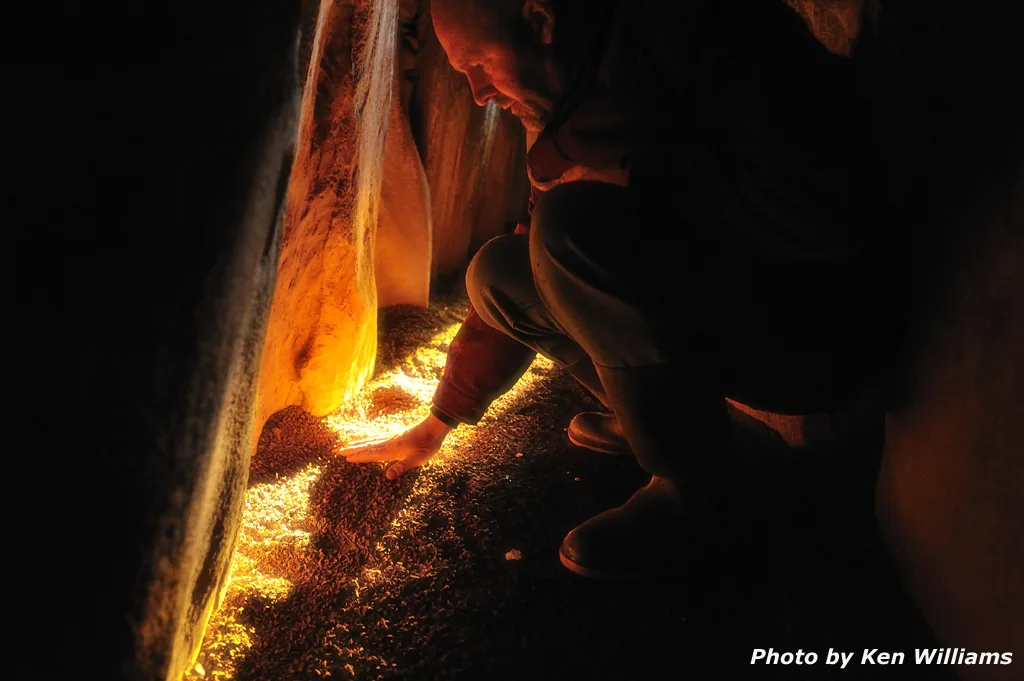 Book a tour
Book a tour
Newgrange is the jewel in the crown of Ireland’s Ancient East.
Newgrange is a Stone Age monument in the Boyne Valley, County Meath. Newgrange was constructed about 5,200 years ago (3,200 B.C.) which makes it older than Stonehenge and the Great Pyramids of Giza. Newgrange is best known for the illumination of its passage and chamber by the rising sun at the Winter Solstice. Above the entrance to the passage of the mound there is a opening called a roof-box. On mornings around the winter solstice a beam of light penetrates the roof-box and travels up the 62ft (19m) passage and into the chamber.
Newgrange has been acting as the historical heart of the east of Ireland
Ireland is steeped in a history that stretched back hundreds and thousands of years. Our past is laced with great stories of myth and legend and questions, and for each milestone of our ancient past, there’s a great monument to mark it for us. That’s what a great megalithic site like Newgrange means to the East of Ireland. It’s one of the largest Landmarks of Ireland’s Ancient East and is probably the most famous grand passage tombs Ireland has. The monument itself is situated in County Meath, but also very close on the border to Country Louth and the town of Drogheda and can be accessed at the end of the Boyne Greenway, which is a walking trail that begins in the town.
Today, Newgrange is a protected UNESCO World Heritage Site; valued for its insight into ancient Ireland. Newgrange was rediscovered in 1699 but up to 1882 the site had been subject to numerous thefts and antiquarianism. The protections came in the form of the Ancient Monuments Protection Act, and also protected the nearby cairn monuments of Knowth and Dowth in the process. Once protected, these monuments were put in control of by the state, and conservation efforts began sometime later in the early 1890’s. Newgrange has gone from an ancient mystery, to a place only sometimes used for religious ritual by new settlers, to a complete ruin. This brings us to today, where anyone and everyone can enjoy the majesty of Newgrange and take in a snapshot of ancient Ireland.
What you can discover about Newgrange
If given the chance, you must take a tour of Newgrange, just to see one of the most unique places in Ireland. It’s not just the tomb itself that’s up for visiting, but there’s also the Brú na Bóinne Visitor Centre where you can learn so much more. You’ll have to go there first if you wish for entry to the tombs, but once there, you’ll see that it’s a state-of-the-art visitor experience designed to give you all of the background of the tomb, as well as Ireland during the Neolithic Period.
Newgrange’s Ancient History
Newgrange itself is believed to have been built around the year 3200BC, and carbon dating shows that its older than both Stonehenge and the Pyramids of Giza. No one is entirely sure what Newgrange was built for. Most agree there’s a religious significance to it, but whether it was built to worship some aspect of death, or some astronomy-based faith (given Newgrange’s ability to illuminate the chamber during the winter solstice, which we’ll chat about later), is up for debate.
Newgrange is called a tomb because various human remains have been found inside during excavations. These remains have been both burnt and unburnt, and data collected from the unburnt remains have found the bones of at least two individuals. Curiously, there’s no full skeletons within the tomb. Alongside these remains, gifts have also been noted to have been left within the tomb. Offerings such as marbles, pendants and beads have been noted inside, and more have believed to have been stored there, but have been lost to looters over the centuries.
By the year 2000BC, Newgrange was in decay. It was no longer being used by the local population, and was instead open to squatters around its edge who wound up doing further damage to its exterior. We’ve connected this period to certain groups of settlers coming into Ireland during this period based on the pottery found there at the time.
How was Newgrange Built
Newgrange is a Cairn monument, meaning the mounded structure has been constructed with a man-made stack of stones. The majority of large stones are greywacke which was quarried in the Clogherhead area, north of Drogheda, County Louth. Other granite boulders used in the structure were collected from the North shore of Dundalk Bay. The façade at Newgrange consists of white quartz, which has its origins in the Wicklow Mountains. All in all, it took about 200,000 tonnes of material to construct it. The inside of the tomb itself is a cruciform passageway, meaning the long, 62ft (19m) passage ends in three very small chambers, which are in a cross-pattern. Each of the three chambers have a basin stone where the remains of prehistoric people, as well as offerings, were apparently left.
What a lot of people are drawn to when discussing the building of Newgrange is the series of artistic depictions that have been carved into the stone. This graphic rock art called megalithic art by archaeologists has many depictions, but the most famous of them are the triskele spirals. A trio of spiral patterns who all connect to each other in a way reminiscent of a three-leaf clover. There’s a lot of dispute as to the meaning of these symbols, whether they’re purely decorative or something more. We’ve briefly mentioned Newgrange’s connection to sunlight already, and I promise we’ll go into more detailed further down, but many people believed the triskele spirals are linked to sunlight.
“This was a special trip for my mother-in-law to visit Ireland and see where her ancestors emigrated from. Michael picked us up from the airport right on time and drove us around the Boyne Valley, stopping at the Hill of Tara, Hill of Slane, and Knowth and Newgrange. He was very knowledgable on the local area. After the tour he dropped us off at our hotel in Dublin. This was one of the best days of our trip! I would definitely hire Michael again!” Trip Advisor Review
Tied to Mythology
Having been built so long ago, it’s no surprise that so many legends have sprouted up about what the purpose and meaning behind it is. Passage tombs like Newgrange were quick to have stories written about them, and in ancient Irish mythology, they were known to be portals to the underworld, or perhaps even to the realm of the Tuatha De Danann. Now, no one knows if any of these stories has anything to do with the original purpose of Newgrange, or whether they were made later as more settlers, colonists and invaders kept rediscovering the location.
One of the most famous stories tied to the site is the story of the Dagda, the patriarch of the Irish Pantheon of gods, sending away the Druid Elcmar on an errand so Dagda could seduce his wife, the Irish goddess of the river Boyne, and the relationship resulted in a child being born. So as to trick Elcmar, Dagda held the sun in place in the sky for nine months so that time would stand still everywhere except for inside Newgrange, where the child was born and Elcmar believed it to be his.
“Our tour with Michael was absolutely one of the best experiences in a long tour of Europe. Visitng Newgrange and another passage tomb, and the Hill of Tara were goals for our time in Ireland: we were very satisfied. And Michaelʻs knowledge of early Irish history and ability to talk about it were a true gift.” Trip Advisor Review
The Winter Solstice Sunrise
If you weren’t already aware, one of Newgrange’s most amazing features is its connection to the sunrise of the winter solstice. Taking place every year, on the shortest days of the year around the 21st of December, the sunrise of the solstice lines up with the tomb’s chamber so that, instead of light coming in through the main entryway, the light enters through the ‘roof box’ above the entrance to illuminate the entire chamber. This entire event lasts only for 17 minutes.
This light portal above the doorway, for it to serve no purpose other than to fill this ancient monument with light on these special days of the year, and for these days of the year to be important days in the sun calendar, can’t be a coincidence, and it’s amazing to think of the effort and stories that the people of ancient Ireland poured into this monument.
The event is such a landmark in the calendar of Ireland’s ancient monuments that it’s become incredibly difficult to get tickets. For decades now, the only way to see the solstice in person is to join a lottery and hope you’re selected. Now, if you’re not selected, you’re still welcome to come and wait outside the monument, but as for getting inside, you’ll have to wait until next year.
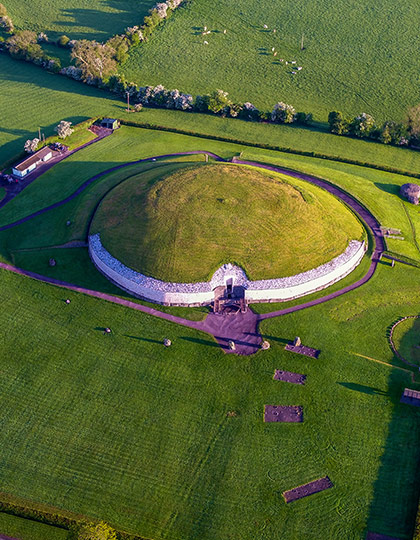
Newgrange & Boyne Valley

8hrs | €650 + Booking Fees

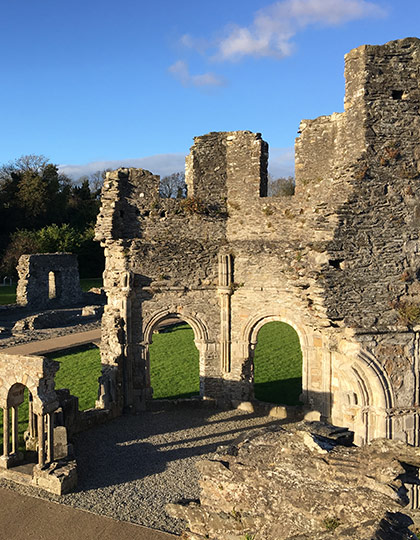
Boyne Valley Castles & Abbeys

8hrs | €650 + Booking Fees

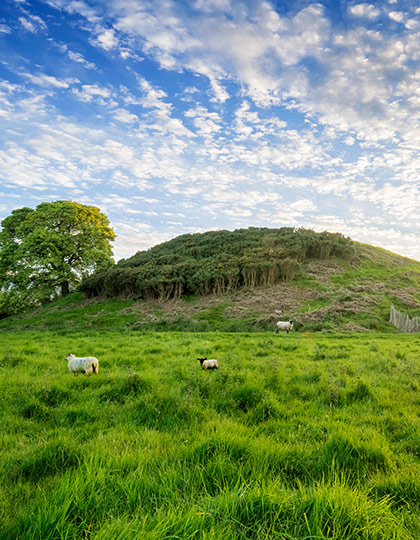
Meath Megalithic Sites

8hrs | €650 + Booking Fees


Glendalough & Scenic Wicklow

8hrs | €650 + Booking Fees

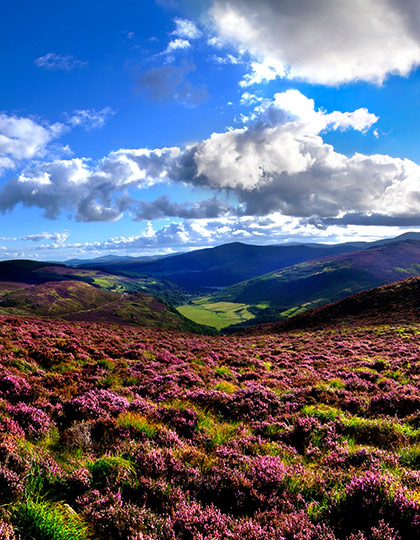
Wicklow Gardens & Scenery

8hrs | €650 + Booking Fees

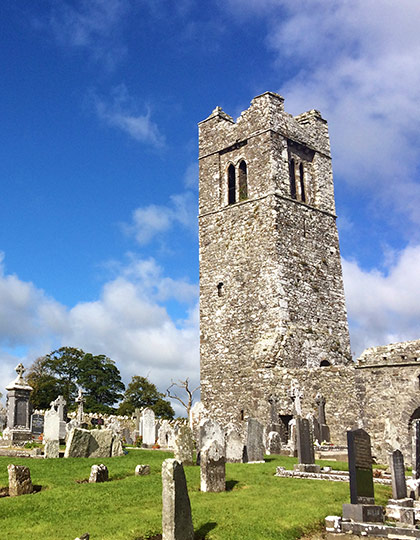
Cruise Excursions

8hrs | €650 + Booking Fees



